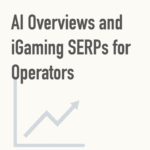It wouldn’t have had as much impact with Darren Anderton, for example. But Cantona, Cantona was perfect.
The first line -or pull back – of Nike’s 1994 advert was seemingly obvious and simple – “’66 was a great year for English football.” It came during a particularly painful period for football in England, with the national side failing to qualify for that year’s World Cup. Two years later, Baddiel & Skinner’s “Three Lions” lamented the 30 years of hurt since England’s only international tournament triumph.
The second line – or reveal – was glorious. “Eric was born.” Nike’s campaign cleverly juxtaposed the famous 1966 World Cup victory by Sir Alf Ramsey’s side with the birth of the talismanic Frenchman, who would go on to become a legendary figure in English football. The ad highlights the idea that his arrival was a pivotal moment for the game in England and showcased Nike’s ability to connect with football culture and history. Overall, the campaign is an excellent example of how Nike uses storytelling and historical references to engage fans, promote its products and celebrate sport’s rich heritage.

Nike’s ability to connect with everyday soccer fans was again on display in their 1998 Park Life campaign. The commercial was filmed on Hackney Marshes, renowned for Sunday league football, and featured Cantona alongside contemporaries Ian Wright, David Seaman and Robbie Fowler. The campaign is still considered one of the brand’s most iconic and memorable marketing efforts, celebrating grassroots football and the culture surrounding it.
Despite coming at the tail-end of the Britpop era, the campaign is also remembered for its catchy soundtrack featuring Blur’s “Parklife” – perfectly complementing the visuals and added to the nostalgic and energetic feel of the ad. The Park Life commercial cemented the brand as one that understood and embraced the culture of football at all levels of the game.
In contrast, Nike’s Airport 98 campaign was more galactico than grassroots – taking the humdrum, mundane nature of an airport terminal into something unexpected and special. The campaign itself was the perfect example of ambush marketing, with Nike’s competitors Adidas an official sponsor of that year’s World Cup. Nike’s sponsorship deal with the Brazil national team was utilised with players such as Ronaldo, Romario, Roberto Carlos, Juninho and Denilson all starring. Behind the camera also featured a stellar team, led by Hong Kong director John Woo.
The campaign was so successful that post-tournament research showed that 32 per cent of viewers believed Nike to be official sponsors of France ’98, compared to 35 per cent for the actual FIFA partner Adidas.
If Carlsberg did football commercials…well, they’d be as good as 2006’s Old Lions campaign. The beer brand compiled a team of England legends to play against a real pub team – who apparently had no idea who they were going to face. The team, with 796 international caps between them, were let lose in a largely unscripted 180-second piece.
It was the interactive element of the campaign that proved revolutionary. A siginicant portion of the marketing spend was used to create interactive content, including outtakes, a ‘making of’ documentary and a longer commercial. It became the most successful interactive television campaign of all time, with agency Saatchi & Saatchi spending £0.36 to get a viewer interacting with the brand for at least four minutes. Carlsberg’s sales during that summer’s World Cup were four times higher than usual, with almost a quarter of those drinking the beer brand on the day of England’s first match stating they’d switched brand as a consequence of the campaign.





